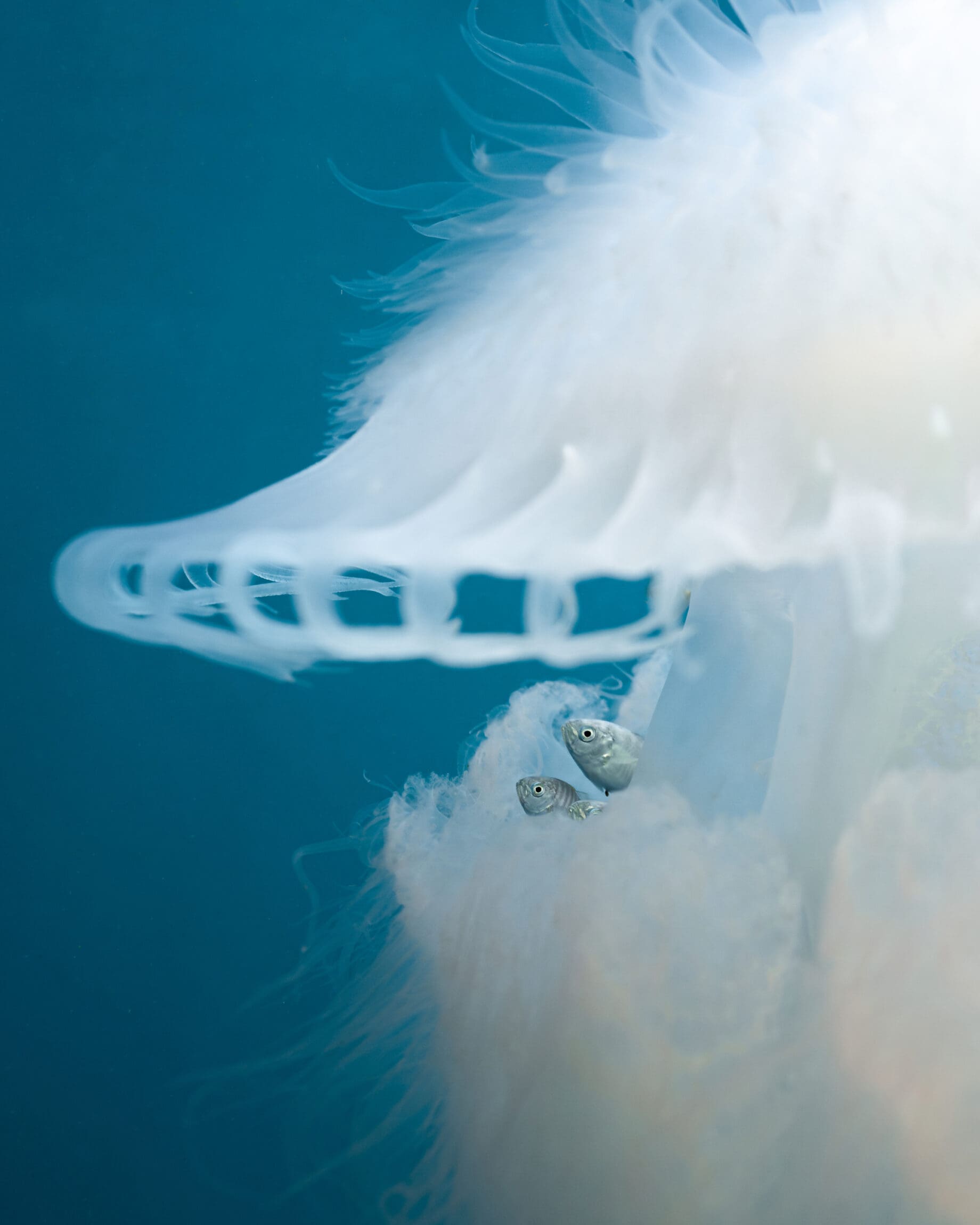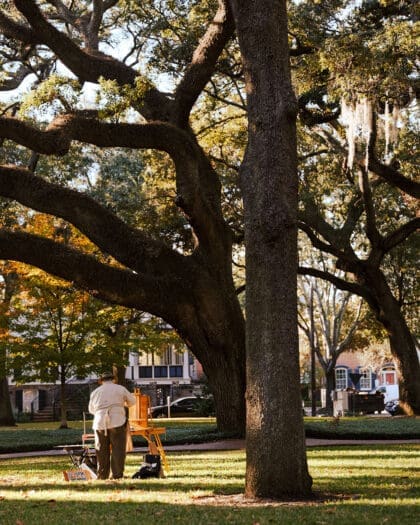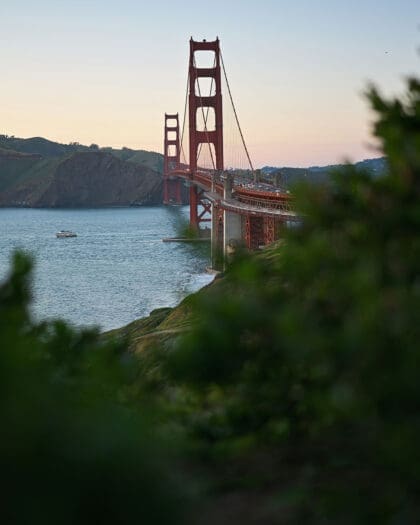
The seven best diving destinations around the world
We ask writer, photographer and diving expert Pier Nirandara to share her top global destinations for underwater adventures, each chosen for their marine life, seascapes and sustainability credentials
When it comes to experiencing nature, there’s nowhere quite as confronting as our oceans and reefs, which offer face-to-face encounters with fascinating marine life – made possible through the ingenuity of snorkelling, scuba diving and the skilled pursuit of freediving. Yet relatively few of us have explored the deep blue, with figures from dema.org showing just 0.3 per cent of the global population dived or snorkelled in 2023.
If you haven’t experienced the life aquatic, it’s worth finding a way. As insiders know, the underwater medium provides an immersive, endlessly inspiring experience, drawing upon controlled breathing and presence of mind. But with the diving tourism sector projected to grow significantly in the decade ahead, picking a dive destination also demands responsible travel choices – something all the more crucial as our marine environments increasingly find themselves under threat from climate change, plastic waste and overfishing.
Here, passionate diver, environmental journalist and underwater photographer Pier Nirandara shares seven of her top destinations to experience ocean life at its best, whatever level you’re at. “A lifetime spent underwater means certain favourite spots have risen to the surface,” she says. “The below list makes a great starting point for anyone looking to get their feet wet, or for experienced divers looking to go deeper.”
From abundant reefs and marine megafauna to tight-knit coastal communities, discover Pier’s top destinations for diving and and snorkelling around the world.

Where to dive for beginners
Thailand
“A long-time popular spot to get scuba certified, Thailand tops my list, particularly for beginners. Offering year-round sunshine, calm conditions and water temperatures that rarely dip below 29 degrees Celsius (negating the use of a wetsuit), the diving is warm – and so are the locals – making for a compelling case to get underwater.
“No matter the time of year, there’s always somewhere to dive in Thailand. Those starting out can head to calm and warm Koh Tao in the Gulf of Thailand, which issues the second-most total PADI certifications each year. More experienced divers may search for whale sharks, manta rays and other megafauna on overnight boat trips to the Similan Islands off the Andaman Coast. Unconventional underwater spots have also emerged: freshwater springs can be explored in Krabi, and freediving is increasingly popular, with schools such as Bangkok Freedivers offering pool dive training in the capital before heading out in the open sea.
“Looking to escape the crowds? Check out Koh Mak, an island in the Gulf near the Cambodian border. Far from the frenzy of Phuket and Koh Samui (which is increasingly popular, thanks to the upcoming third season of The White Lotus), this idyllic island is a few short hours away from Bangkok but feels like worlds away. Filled with the charismatic charm reminiscent of the Thailand of decades past, the island is brimming with cute coffee shops, friendly local-run restaurants and golf carts in lieu of cars. Stay on a beachfront property, go snorkelling around abundant reefs, or pay a visit to Coral Gardeners Thailand – a newly opened conservation centre.”


Where to dive for adventure
South Africa
“At the other end of the spectrum, South Africa’s waters can often be cold, but the tougher conditions offer massive rewards. Along the country’s eastern spine, the Wild Coast’s annual sardine run is a chance to experience the largest underwater migration on earth, with sharks, dolphins, and whales hunting bait balls of sardines in frenzied feeding. It’s an adrenaline-inducing adventure, and one that frequently tops diving bucket lists.
“Elsewhere, plunge into Cape Town’s frosty Atlantic Ocean and the comparatively warmer (though still chilly) waters of False Bay, and dive through history, from the Great African Seaforest of My Octopus Teacher, to transatlantic slave trade shipwrecks embalmed on the sea floor. Learn about marine conservation in Kalk Bay, a seaside town south of Cape Town CBD, which is home to the I Am Water Foundation and Save Our Seas Foundation. Here, you can learn about individuals leading the charge in reclaiming ocean spaces, such as National Geographic Explorer Shamier Mogamat Magmoet and Zandile Ndhlovu, the country’s first Black freediving instructor.
“Go on an ocean safari with Animal Ocean, scuba dive with Dive Team Cape Town, or freedive with Cape Town Freediving. On the Cape Peninsula, try your hand at coastal foraging with Roushanna Gray of Veld & Sea, or visit the Origins Exhibit at the Buffelsfontein Visitors Centre in Cape Point Nature Reserve to discover the region’s original inhabitants and their relationship with the water. Thirty years after the end of apartheid, diving in South Africa is an opportunity to go deeper into the country rather than skimming the top of its tourism, with layered stories keeping one returning time and time again.”

Where to dive for underwater photography
The Bahamas
“Home to the world’s third-largest barrier reef, countless blue holes (large underwater sinkholes), caves and shipwrecks, the Bahamas is an underwater photographer’s paradise. Crystal clear visibility up to a depth of 60 metres frequently provides studio-quality conditions for capturing incredible images, and the family-friendly destination provides a great scuba and snorkelling offering for beginners and advanced divers alike.
“From swimming with friendly Atlantic spotted dolphins off Bimini in the summer months, to scuba diving with sharks at the world-renowned Tiger Beach in winter, the Bahamas is a must for fans of megafauna such as hammerhead and tiger sharks. Cat Island hosts reef dive sites and wall diving, while Long Island boasts Dean’s Blue Hole, the second deepest blue hole in the world. The nation was represented at the United Nations General Assembly Sustainability Week to declare its unwavering commitment to raising awareness for the importance of sustainable tourism, as guided by the UN’s Sustainable Development Goals. My personal ideal day in Bimini includes waking up for a morning dive with reef sharks and shipwrecks, enjoying a quick breakfast on the boat, taking a plunge to swim with stingrays, grabbing lunch, then snorkelling with playful Atlantic spotted dolphins until the late afternoon.”

Where to dive for accessibility
Mexico
“Whether it’s cenotes in the Yucatan Peninsula, Cabo Pulmo in Baja California Sur or liveaboard boat trips to the Revillagigedo Islands, Mexico offers a fantastic bang for your buck. Baja in particular offers some of the country’s best kept secrets, where the desert meets the ocean in a breathtaking swathe of yellow and blue. Baja is home to the annual mobula ray aggregation in May and June and the marlin run in October and November. Its Gulf of California (also known as the Sea of Cortez) was dubbed “the world’s aquarium” by renowned French explorer Jacques Cousteau (the father of scuba diving). The sea is an inspiring success story for conservation, too. Once heavily exploited by overfishing, Cabo Pulmo National Park is now a Unesco World Heritage Site and marine protected area, famous for its 20,000-year-old reef (one of the only three remaining in North America), as well as its tornadoes of swirling jacks and bull sharks.
“To reach Baja, new flight routes are opening all the time – Alaska Airlines flies direct from Los Angeles to La Paz from December 2024. Fly into Cabo San Lucas or San Jose Del Cabo and stay at the Montage Los Cabos, a beachfront property overlooking the azure waters of Santa Maria Bay, with its own onsite dive centre and access to the only swimmable beach in the area.”


Where to dive with humpback whales
French Polynesia
“The South Pacific is hands down the best place to legally swim with whales – and French Polynesia is the most tourist-friendly option. Each July to November, hundreds of humpback whales migrate here from Antarctica in search of warmer waters to mate, calve and nurse their young. There are playful juveniles, loud singers, heat runs (the whale equivalent of rutting), and curious newborns that swim clumsily around as they learn to maintain buoyancy. On the verge of extinction earlier in the century, combined international efforts have led to a recovery in humpback numbers, a heartwarming sign of the possibilities in conservation.
“There are direct flights to the capital, Papeete, from Los Angeles, San Francisco, Paris, Tokyo, Auckland, and more. A quick ferry ride takes you to Mo’orea, the most popular but also the most crowded destination of the bunch. Instead, check out the southerly Austral Islands for fewer tourists, and be sure to stick to ethical operators – look for smaller groups with local captains and experienced guides. If time and budget allow, a whale swimming trip is especially worthwhile, combined with some shark diving, best experienced in Fakarava, a remote atoll in the Tuamotus and home to the famous ‘Wall of Sharks‘ – a dazzling sight of hundreds of blacktip, white tip, and grey sharks gently hanging in the current.”

Where to dive with sperm whales
Dominica
“Support eco-tourism at the world’s first sperm whale reserve. In a historic move, the island nation of Dominica recently created nearly 800 sq km of marine protected sea off its shores to conserve its sperm whale population – an example of how regulated tourism and conservation efforts can promote biodiversity while coinciding with economic growth. Permits for whale swims are issued on a limited basis, ensuring respectful interactions with the cetaceans. Sperm whales have the largest brains on earth, can grow up to 50 feet in length, and live in complex matrilineal societies. The whales are found using a hydrophone, and many guides can recognise them by their unique clicks and codas.
“Check out the secluded and sustainable Secret Bay, a Relais & Chateaux resort with private villas and endless rainforest-to-ocean views. Their sister property Fort Young Hotel & Dive Resort comes with an on-site dive operation and offers shore diving from the jetty.
“Learn about sperm whale research and an international initiative to decode whale language at Project CETI. Explore hidden gorges, towering waterfalls, and award-winning local cuisine, all the while knowing you’re contributing to a budding destination for regenerative tourism that’s leading the charge in marine conservation.”

Where to dive for endemic species
The Galápagos Islands
For divers, the Galápagos offers the ultimate in underwater wildlife encounters. Situated 1,000 km off the coast of Ecuador, these volcanic islands are a World Heritage Site and home to a mind-blowing number of endemic species found nowhere else on earth, including marine iguanas and blue-footed boobies. Walk beside giant tortoises, swim with sea lions, and spot a plethora of sharks, rays, and birds. At deeper sites offshore, lucky divers can witness schooling scalloped hammerheads – their silhouettes filling up the water column. From drift dives and offshore pinnacles to shore snorkelling, the islands are bursting with biodiversity – there’s a reason it inspired Darwin’s theory of evolution.
Experiences range from land-based tours for snorkellers and families to advanced week-long boat trips for more seasoned scuba divers, to explore the distant Wolf Island and Darwin’s Arch dive sites. Strict regulations and active conservation projects make the Galapagos a well protected destination and a pinnacle for diving enthusiasts and nature lovers. A trip to the Galapagos highlights the importance of preserving these fragile habitats for generations to come, and is sure to be the highlight of any diving career.








